The 13 best killer dolls in movies and TV
- Oops!Something went wrong.Please try again later.
- Oops!Something went wrong.Please try again later.
- Oops!Something went wrong.Please try again later.
- Oops!Something went wrong.Please try again later.
- Oops!Something went wrong.Please try again later.
Killer dolls… they're just like us! We often forget how similar the desires of these pint-sized murderers are to our very own dreams and aspirations. Behind all of the bloodshed, they want the same things we all do: a happy family, immortality, to be reborn through the body of a complete stranger. Thanks to M3GAN and her self-titled debut feature, directed with tremendous style by Gerard Johnstone (Housebound) and produced by killer doll connoisseur James Wan (Saw, Dead Silence, Annabelle) and Blumhouse honcho Jason Blum, the little slayers are back where they rightfully belong — smack dab in the center of the cultural zeitgeist.
M3GAN — short for Model 3 Generative ANdroid — took the North American box office by storm over its opening weekend, exceeding industry expectations and amassing a stellar $30.4 million gross, making it the only film to gross over $30 million during the year's first weekend since The Devil Inside won the same frame in 2012. (Worldwide, M3GAN grossed over $45 million during its first four days of release.)
Wan is certainly no stranger to insidious dolls, but the prolific filmmaker is quick to distinguish what sets M3GAN apart from his other carved-wood spookfests. "I get branded a lot as the killer-doll guy, but I've never technically made a movie about a doll that kills — it's always possessed by some sort of evil spirit," he recently specified to EW. "We thought it would be fun to do a movie that is basically Annabelle meets the Terminator."
While M3GAN's opening wasn't enough to topple James Cameron's financial juggernaut Avatar II: The Way of Water, it's a figure that has quieted the fluttering anxiety of many theater owners and has ensured that M3GAN will return for a sequel. (We just hope they'll ask Bruce the robot back, as well.)
M3GAN, however, is just the newest in a long line of cinematic bad dolls, a subgenre which dates all the way back to 1936's The Devil Doll, in which Lionel Barrymore shrinks several of his associates so that they may impersonate dolls in order to orchestrate revenge on the men who framed him for murder. Several years later, in the closing chapter of the British anthology Dead of Night (1945), Michael Redgrave was savagely pursued by a demented ventriloquist's dummy.
Yet it was a little doll named Talky Tina, appearing on the second season of The Twilight Zone, which planted itself in the memories of children everywhere and gave birth to the wave of killer doll movies that proliferated in the late '80s and '90s, popularized by the Child's Play franchise before eventually giving way to the labyrinthine mythology of Puppet Master and the demented pleasures of Demonic Toys.
Because we so badly wish to show our appreciation for (and stay on the good side of) these miniature murderers, we've caught up with M3GAN and twelve more of our favorite killer dolls to celebrate their legacy.
The Clown Doll - <i>Poltergeist</i> (1982)
On-Screen Appearances: While a fairly minor character in Tobe Hooper's 1982 freak-out classic Poltergeist, the Clown Doll is one of the most-remembered antagonists in that demented flick. Possessed by The Beast and used as a distraction so that other spirits may abduct young Carol Anne (Heather O'Rourke), the Clown Doll appears in only the first installment in the series. As James Wan told EW, his obsession with mean-spirited dolls came "down to watching Poltergeist at a very young age. That was definitely a very influential film for me, and I saw it at a very young impressionable age, and it made a huge impression on me, and that creepy clown doll definitely scarred me for life."
Origin Story: One of the most notorious stories from the Poltergeist set centers around an accident involving actor Oliver Robbins, who portrayed young Robbie in the film, and a hydraulic system designed by the prop department to simulate the Clown Doll's death grip on the young boy's neck during the film's most famous sequence.
Whilst filming, the doll's grip grew tighter and tighter around Robbins' neck until the actor broke character and began struggling against the evil doll. Director Hooper and producer Steven Spielberg, from whose imagination the Clown Doll originally sprang, apparently thought that Robbins was improvising a particularly visceral reaction. Once the actor began to change color, however, Spielberg himself intervened and pried the Clown Doll's fingers from around Robbins' neck. It's yet another unbelievable story from the Poltergeist set, and one that only adds to the spooky specter surrounding our rosy-cheeked friend.
Career Highlight: It would have to be Hooper's original Poltergeist. Not only is it the single installment in which the Clown Doll appears, but it's an effortlessly entertaining rollercoaster fright flick that remains unmatched by any of its sequels (or that remake).
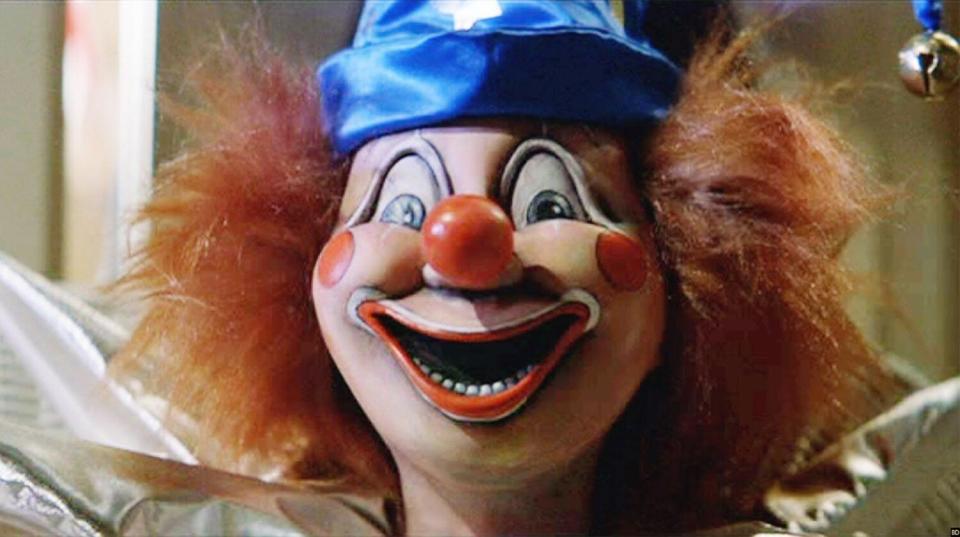
Billy - The <i>Saw</i> franchise (2004 - )
On-Screen Appearances: Suitably, Billy was introduced in James Wan's 2004 directorial debut — the indie smash Saw — and has been asked back for each of the sequels, providing significant jolts up through Jigsaw (2017). While his appearance was retooled and reimagined for the lackluster Spiral (2021), the Billy we all know does at least appear there in a photograph, as all great stars do once they have moved on to greener pastures and their franchises reboot themselves.
Billy has gone on to lead a quiet life after his torture porn tenure. He does occasionally pop up at horror conventions, and made a cameo appearance in Dead Silence, Wan's 2007 thriller about demented ventriloquist Mary Shaw (Judith Anna Roberts) and her cadre of carved friends.
Origin Story: Much like Annabelle, Billy's origins arose from tragedy. Built by John "Jigsaw" Kramer (Tobin Bell), the primary antagonist/hero of the Saw films, as a gift for his then-pregnant wife Jill (Betsy Russell), Billy quickly became all that Kramer had left of his family after crazed drug addict Cecil Adams (Billy Otis) accidentally caused Jill to have a miscarriage. The spindly puppet would then go on to assist Jigsaw in the latter's murderous games.
Career Highlight: Saw III, a masterwork of the torture porn subgenre, delivers a splatter-happy, deviously twisty finale to the initial trilogy in addition to providing Billy with a handful of startling moments.

Mr. Slausen's mannequins - <i>Tourist Trap</i> (1979)
On-Screen Appearances: In 1979, before he made his name as director of Puppet Master, David Schmoeller helmed a slightly different killer doll flick in the form of Tourist Trap, a creepy grindhouse oddity about a group of teens who stumble upon Mr. Slausen (Chuck Connors) and his decrepit museum of hideously life-like mannequins who are keen to recruit the young travelers to their ranks.
Origin Story: Tourist Trap was adapted from The Spider Will Kill You, Schmoeller's thesis film which he made during his time at the University of Texas. (It would go on to be nominated for a student Oscar.) Schmoeller's 1979 feature was the first collaboration between the director and producer Charles Band, who would likewise go on to make a career out of the Puppet Master films.
Schmoeller told Retro Slashers in 2009: "My producing partner, Larry Carroll, was working as an editor for Charles Band – and he submitted the script to him. Charlie read the script, liked it, wanted to know if I could direct. I showed him The Spider Will Kill You – which had all these effects about mannequins coming alive – so he knew I could direct – and gave us a green light."
Career Highlight: Dawn Jeffory Nelson, who portrayed Tina in the film, reported to EW in 2017 that "I don't think the film was very well reviewed [at the time of its release], but many more people than I ever suspected love the film, which is awesome. I was the acting coach for the young boy who played Danny in the miniseries of The Shining.
One of the things I found out was that this was one of Stephen King's favorite films. But it still is a surprise to me. None of us thought it was going to become a cult classic! There were so many mannequins and body parts all over the set, that they would sometimes forget that that was a 'real' me. I mean, literally, I had people lean on me…[But] David Schmoeller, the director, was a doll."
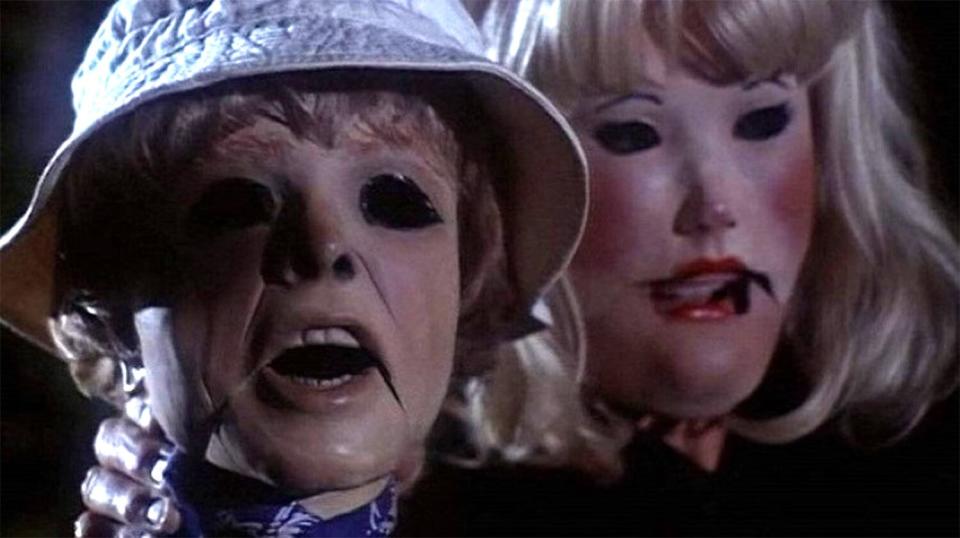
Zuni Fetish Doll - <i>Trilogy of Terror</i> (1975)
On-Screen Appearances: The Zuni Fetish Doll met American television audiences on March 4, 1975 in the third segment of Trilogy of Terror, a horror anthology starring Karen Black in three disparate roles (and stories), penned by writers Richard Matheson (I Am Legend, What Dreams May Come) and William F. Nolan (Logan's Run), with direction by genre veteran Dan Curtis (Dark Shadows, Kolchak: The Night Stalker).
Zuni's segment, the Matheson-authored "Amelia", finds Black's title character pursued about her apartment by our killer star and is widely regarded as the most memorable chapter in the film. It was refashioned from a Twilight Zone episode Matheson had written that was inevitably produced as The Invaders, the fifteenth episode of the second season, in which Agnes Moorehead is stalked about her estate by little green men.
"My original story was not to their taste," Matheson said in the book Dimensions Behind the Twilight Zone: A Backstage Tribute to Television's Groundbreaking Series. "So I turned it into a science-fiction approach. Many years later, the grim approach to the story – not that The Invaders is exactly comedy – became one of the stories on Trilogy of Terror, the Zuni doll chasing Karen Black all over the apartment."
After a 21-year break, the Zuni Fetish Doll returned for the Curtis-directed Trilogy of Terror II (1996), once again anchoring the film's final movement in which the iconic villain stalks Dr. Simpson (Lysette Anthony) in an isolated museum.
In 2017, Zuni made a cameo on the first season of At Home with Amy Sedaris, in an episode entitled Holidays, which finds Sedaris besieged by the doll amidst her seasonal celebrations.
Origin Story: While Trilogy of Terror depicts them as a carving possessed with the spirit of an African demon, the Zuni tribe were in fact Native American, settling in West-Central New Mexico on the Arizona border. This geographic mystery is further muddied by the particulars of exactly how the spirit of Zuni hunter He Who Kills became trapped within this icon. As evidenced from the finale of Trilogy of Terror as well as its sequel, He Who Kills is able to transfer his spirit from the Zuni doll into anyone He so pleases, which means he could be just about anyone…
Career Highlight: Each of Zuni's screen appearances have been top-notch. We suggest you treat yourself to a marathon of all three.
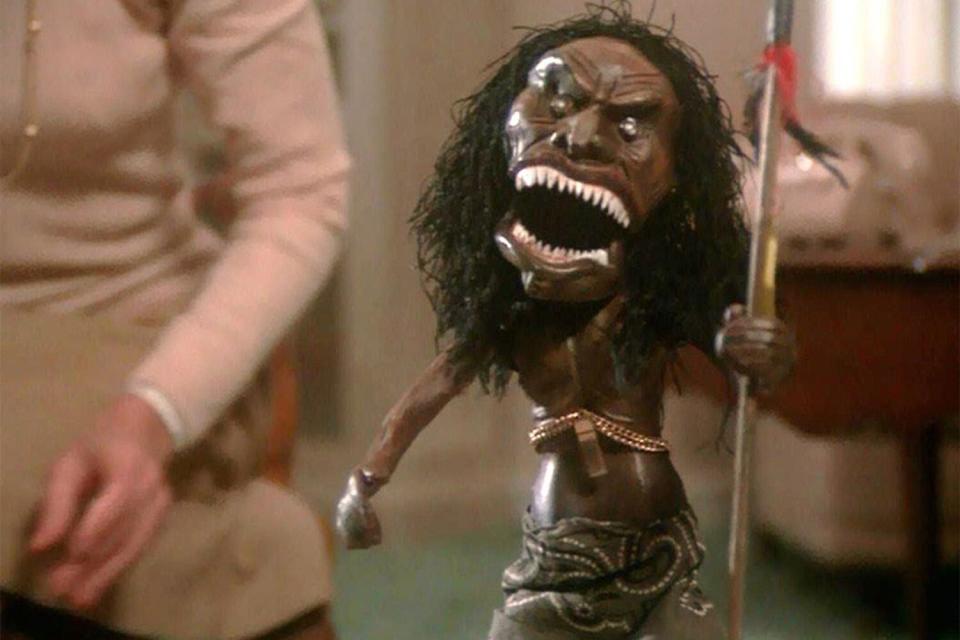
Talky Tina - <i>The Twilight Zone</i> (1963)
On-Screen Appearances: As the progenitor of many a killer doll, Talky Tina managed to lay the groundwork for the entire subgenre in just 25 minutes. Appearing on episode six of season five, Tina's DNA can be found running through all of our favorite killer dolls, with her tendencies for both sass-talk and homicide inspiring everyone from Chucky and Baby Oopsy Daisy up to Annabelle and M3GAN.
Origin Story: Annabelle Streator (Mary LaRoche) buys for her young daughter Kristy (Tracy Stratford) the evil doll of the title, which the newlywed mother hopes will ease her daughter's transition into a new life with strict stepfather Erich (Telly Savalas). Despite the doll's sweet demeanor in front of Kristy and Annabelle, Erich knows the truth about Talky Tina. After the doll unambiguously informs Erich that "my name is Talky Tina, and I'm going to kill you," he attempts to destroy the doll in a variety of ways, but it is Tina who will ultimately destroy Erich.
Career Highlight: June Foray, who went uncredited as the voice of Talky Tina, also gave her voice to the then-popular Chatty Cathy doll which acted as the inspiration for Tina. Foray, an accomplished actor who also voiced Natasha Fatale and the titular flying squirrel on the original Adventures of Rocky and Bullwinkle series, would return to The Twilight Zone universe for the final episode of the original series, entitled "The Bewitchin' Pool." She dubbed the voice of actor Mary Badham (Oscar-nominated for her turn as Scout in To Kill a Mockingbird) in the outdoor scenes of that episode after on-set construction interfered with the audio of a pivotal final scene.
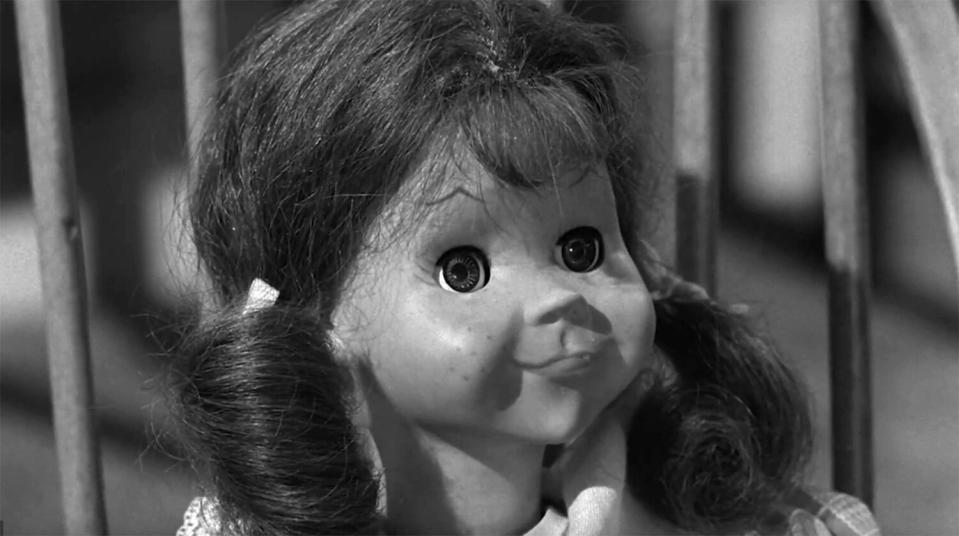
Mr. Punch - <i>Dolls</i> (1987)
On-Screen Appearances: The late horror baron Stuart Gordon's Dolls (1987) is a high-watermark of the killer doll genre, eclipsed only by Chucky and his venerable franchise. The cultural staying power that the film has managed is all the more impressive when you consider it produced no sequels, prequels, nor remakes. Gordon's popcorn horror story finds six strangers — including put-upon Judy (Carrie Lorraine), her nasty father (Ian Patrick Williams) and her evil stepmother (Carolyn Purdy-Gordon, the director's wife) — stranded amidst torrential rain in the old dark house of puppet maker Gabriel Hartwicke (Guy Rolfe) and his wife Hilary (Hilary Mason, Don't Look Now), whose collection of dolls, including a sinister Punch and a hulking teddy bear, are possessed by the spirits of wicked people the couple has captured over the years.
Origin Story: Gordon was inspired to make a film in the vein of Hansel and Gretel after reading both Ed Naha's treatment for the picture as well as Bruno Bettelheim's book The Uses of Enchantment "which discusses the importance of fairy tales. He really debates people who say fairy tales are too violent," Gordon told John Andrew Gallagher in the latter's book Directors on Directing. "His attitude is that it's a scary world out there, and fairy tales are a way children are prepared for that world. The idea of doing a movie that rather than toning down those elements really plays them to the limit was something I found very interesting."
Career Highlight: Dolls was Gordon's second film after Re-Animator (1985), and to commemorate the occasion, the director moved production to Dino de Laurentis' studios in Italy. "They call it Dinocitta," Gordon told EW's Clark Collis in 2014. "It was the size of Universal… But it had gone completely to ruin. The sidewalks had cracks with big weeds growing through them and they had torn out all of the heating systems…But it was a great experience. I think there were three or four movies shooting simultaneously. [Producer] Charlie Band had bought the studio and they were shooting [David Schmoeller's] Crawlpsace with Klaus Kinski… and they had just finished shooting Troll. So it had become a movie factory again. It was very exciting."
Of his relationship with Band, Gordon told EW back in 2014 that the producer is "so enthusiastic, you can't say 'No' to him. Oftentimes, his movies only involve a title and a poster. There's no script. With Dolls, of course, Ed Naha had written this brilliant script. But on Castle Freak, I looked at this poster and I said, 'What's this movie about?' And he said, 'Well, there's a castle and there's a freak.' [Laughs] He said, 'As long as you incorporate those two elements, you can pretty much do whatever you want.'"
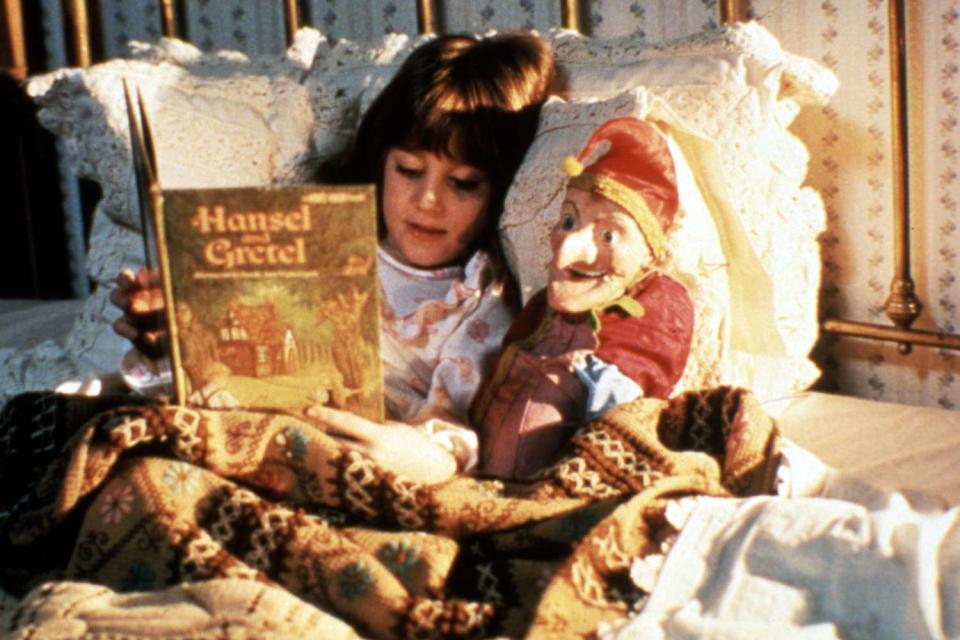
Baby Oopsy Daisy - <i>Demonic Toys</i> (1992)
On-Screen Appearances: When Baby Oopsy Daisy made their feature debut in 1992's Demonic Toys, Chucky was the only killer doll that Hollywood was talking about. Determined to make a splash in the industry, Baby Oopsy Daisy entered the market (quite literally) guns blazing, determined to carve out a spot for themselves amongst their killer cousin Chucky and the famously wordsmith Freddy Krueger.
Under the tutelage of producer Charles Band, Baby Oopsy Daisy returned for several sequels — Dollman vs. Demonic Toys (1993), Puppet Master vs. Demonic Toys (2004), and Demonic Toys 2 (2010). Recently they've had a chance to shine in a pair of campy solo-vehicles, Baby Oopsie and Baby Oopsie: Chapter Two (both 2021).
Origin Story: Initially, Baby Oopsy Daisy was working to secure victims for their master, The Kid, a demon who wished to impregnate someone so that he might transfer his soul into the baby and be reborn. It didn't take long for a natural split to occur, however, and in the later sequels Oopsy cut out on their own to tear a bloody swath across suburban America.
Career Highlight: While the recent Baby Oopsie films have given their star much time to shine, we think their most straightforward work was accomplished in the original Demonic Toys. There is something to be said, though, for Baby Oopsy's turn in the absurdly enjoyable Puppet Master vs. Demonic Toys, a film ostensibly made by a child in a bathtub, in which Oopsy co-stars opposite Corey Feldman.
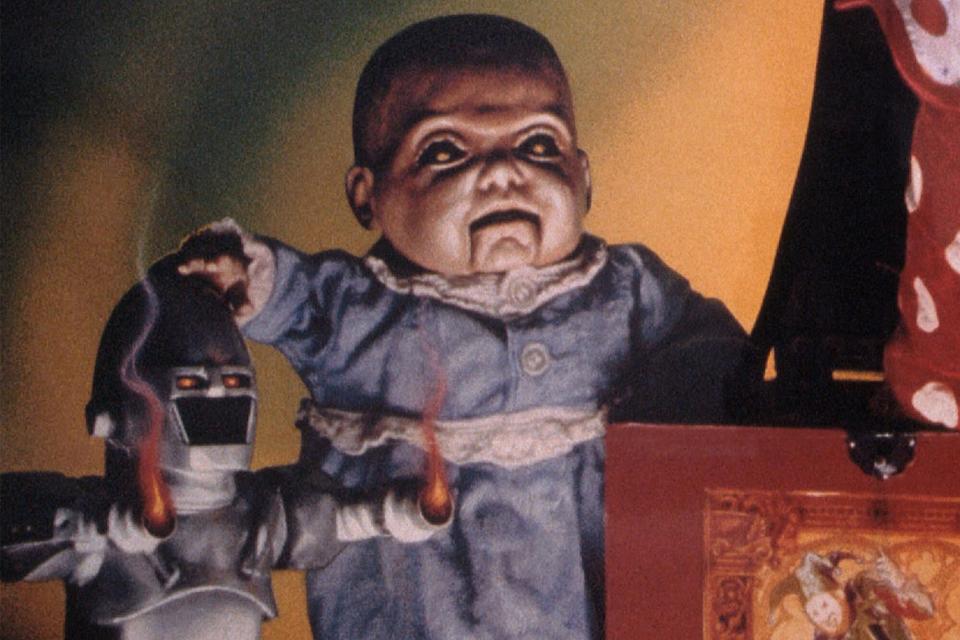
Blade, Jester, and Pinhead - The <i>Puppet Master</i> franchise - (1989 - )
On-Screen Appearances: These three merry puppets are the only ones to appear in each of the Puppet Master films thus far. That's a whopping 15 features, including sequels, prequels, and reboots.
Origin Story: Unlike the murderous rampagers of the Demonic Toys franchise, the homicidal toys from the Puppet Master films often operate on the side of good. While they're operated by, and working for, the villainous Neil Gallagher (Jimmie F. Skaggs) in the first film, Blade and his compatriots soon returned (in Puppet Master II) to the Bodega Bay Hotel, where they went about trying to resurrect their true master, André Toulon, who took his own life in the hotel years earlier.
Career Highlight: David Schmoeller's first Puppet Master is a fun late-'80s nostalgia trip, and Puppet Master II pleasurably brings both the gore and humor up several notches. Perhaps surprisingly, though, the late-era sequel Puppet Master: The Littlest Reich (2018), scripted by S. Craig Zahler (Bone Tomahawk), is an unbelievably fun addition to the franchise.
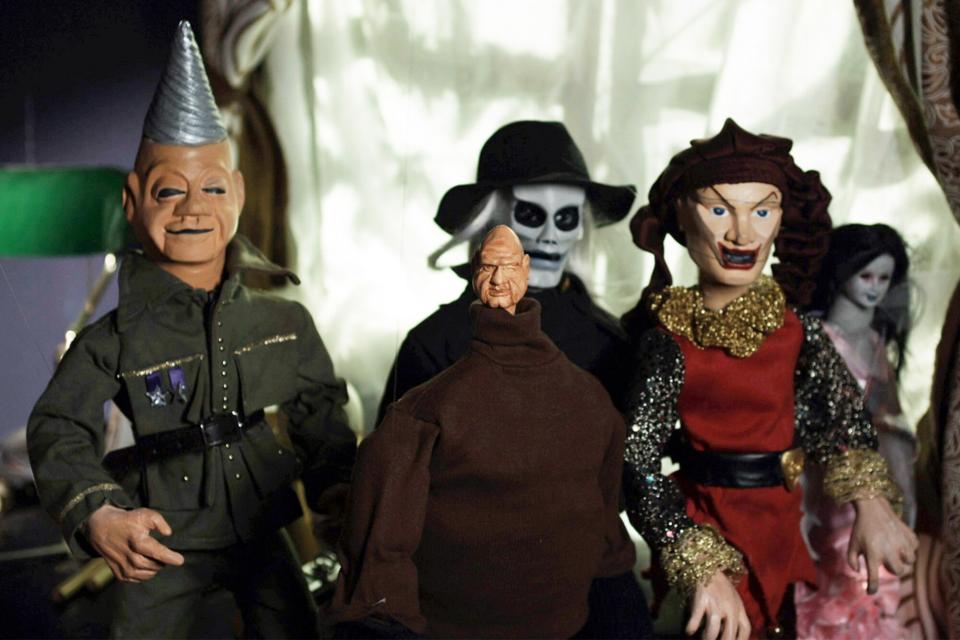
Annabelle - The <i>Annabelle</i> franchise (2014 - )
On-Screen Appearances: Annabelle was actually introduced in the opening moments of 2013's The Conjuring, where she won audiences' hearts and quickly went on to star in her own self-titled spin-off the following year. A prequel, Annabelle: Creation, followed in 2017; two years later the woeful Annabelle Comes Home would sideline the title villain in her own film.
She has yet to return to the screen.
Origin Story: Annabelle Mullins was the young daughter of dutiful toymaker Samuel Mullins (played by Anthony LaPaglia in Creation). On a clear spring afternoon, waiting for her father to change a flat tire on the way home from church, Annabelle wandered into the street and was tragically killed by a hit-and-run driver.
Distraught, Samuel and his wife Esther (Miranda Otto) unknowingly summoned the horned demon Malthus when they prayed for the return of their daughter in any form. Malthus, impersonating the spirit of Annabelle, took up residence in the deceased girl's beloved porcelain doll and the rest, as they say, is celluloid history.
Career Highlight: David F. Sandberg's (Lights Out, Shazam!) Creation gave the eponymous villain the quality of film she deserves in the form of an elegant, chilling ghost-and-demon tale that owes as much to the best work of Guillermo del Toro as it does to the jump-centric oeuvré of James Wan.
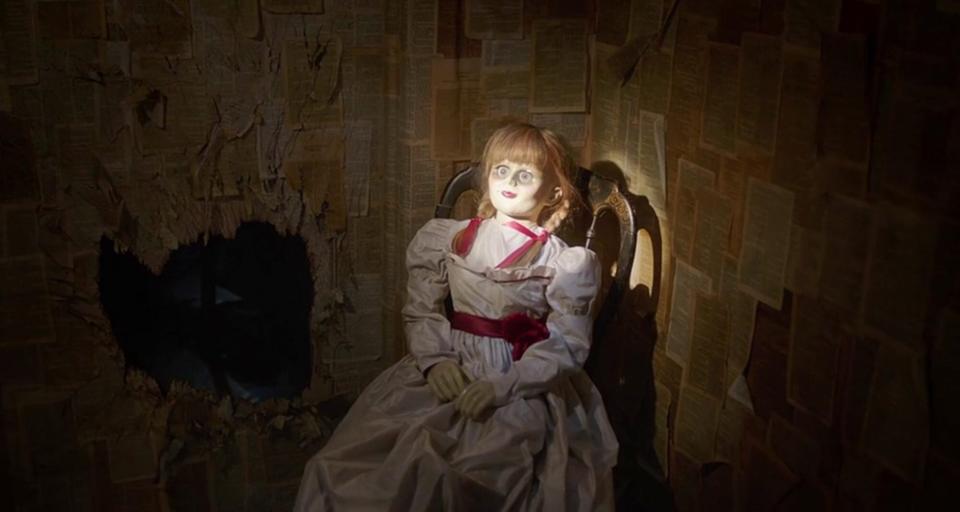
M3GAN - <i>M3GAN</i> (2023)
On-Screen Appearances: M3GAN is the youngest addition to this lineup, but she's hardly an ingénue. In her first role, M3GAN exhibits the qualities of a born movie star. We cannot recall the last time we were so collectively bowled over by one actor's entrance into the world of cinema. Step aside, Chalamet. Move over, Zendaya. M3GAN's come to town.
Origin Story: High-strung inventor Gemma (Allison Williams, in a spot-on performance) is thrown a curveball when her sister and step-brother die in an auto accident and her niece Cady (Violet McGraw) comes to live with her. Seemingly as a way to help Cady cope with the loss of her parents, but really to provide a watchful eye while she works on an important project for work, Gemma invents M3GAN, a startlingly realistic A.I. doll designed to protect the emotional (and physical, that's the kicker) well-being of their owner.
As Cady's attachment to M3GAN grows, and Gemma becomes increasingly valued within her company due to her game-changing invention, M3GAN begins to exhibit a sentience, and — could it be? — a malevolence that Gemma did not code for.
Career Highlight: It's always a delight to discover new talent, but it is doubly delightful when that talent comes wrapped in a package as confidently entertaining as M3GAN is. Johnstone's film navigates that tremendously tricky space between horror and comedy, excelling in both with help from the formidable title character, a sharp script, and a brilliant soundtrack. (Are we the only ones who can't stop belting M3GAN's cover of "Titanium" in the shower? Doubtful.) It's a popcorn movie first and foremost (one of the best in a while), but Johnstone also finds within his characters nuances relatively uncommon within the subgenre, and these personal touches ground even the most chaotic sequences.
Embodied with expert precision and sass by Amie Donald and voiced by Jenna Davis in a seamless fusion of performances, M3GAN makes such a convincing case for her slasher status — no more so than in the film's central sequence, a forest-set confrontation which plays as I Spit On Your Grave for the under-12 crowd — that it's not unimaginable she could one day dethrone Chucky himself. Certainly, the Twitter feud between the two Universal properties hints at a possible duel in the future. Might we have Chucky vs. M3GAN by this time next year?
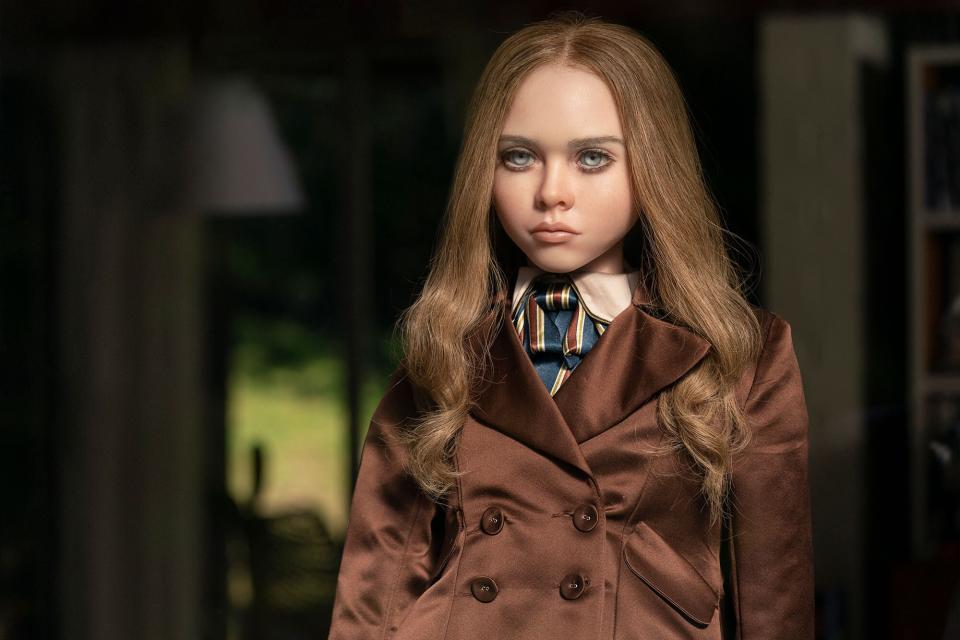
Chucky - The <i>Child's Play</i>/<i>Chucky</i> franchise (1988 - )
On-Screen Appearances: The superstar amongst killer dolls, Chucky (voiced by Brad Dourif) got his start in 1988's franchise-kindling Child's Play, playing a relatively subdued version of his beloved stage persona. Since then, ol' Chuck has grown into himself, going on to headline seven further feature films (including a controversial reboot in 2019, also titled Child's Play). He just wrapped season two of his very own Syfy series, aptly titled Chucky, and hopes to return for a third season.
Origin Story: After he was felled by a bullet during a foot pursuit with Detective Mike Norris (Chris Sarandon), serial killer and petty thief Charles Lee Ray (Dourif, in the flesh) transferred, with his dying breaths, his mortal soul into the body of a plastic Good Guys doll. The fact that Good Guys were the hottest toy on the market during the '88 holiday season apparently eluded Lee Ray, and he is soon placed under the Christmas tree of young Andy Barclay (Alex Vincent) and his harried single mother Karen (Catherine Hicks).
Despite repeated efforts to assert his independence, Chucky found himself hesitant to detach from Andy. After Karen's incarceration in a psychiatric hospital following the events of the original, Chucky followed the young boy first to a foster home (Child's Play 2, 1990), and then to a military academy (Child's Play 3, 1991). Apparently realizing his overtures to Andy would remain unreciprocated, Chucky severed ties altogether and settled down with old flame Tiffany (Jennifer Tilly), freshly relieved of her human vessel and brought back to life in the form of a doll herself (Bride of Chucky, 1998).
Chucky and Tiffany would have a child (Seed of Chucky, 2004) before the family took a collective break from acting to focus on raising their growing family. Chucky returned to the fray with Curse of Chucky (2013) and Cult of Chucky (2017) before settling into his television schedule, which we hear allows the little guy to spend even more time with his killer brood.
Career Highlight: Bride of Chucky, the third sequel in the franchise, finds director Ronny Yu and series creator Don Mancini navigating a tonal tightrope between genuinely icky gore and nail-biting suspense along with brilliant touches of screwball comedy and a dose of (surprisingly well-earned) emotion. Bride of Chucky is undoubtedly the Godfather Part II of killer doll movies.
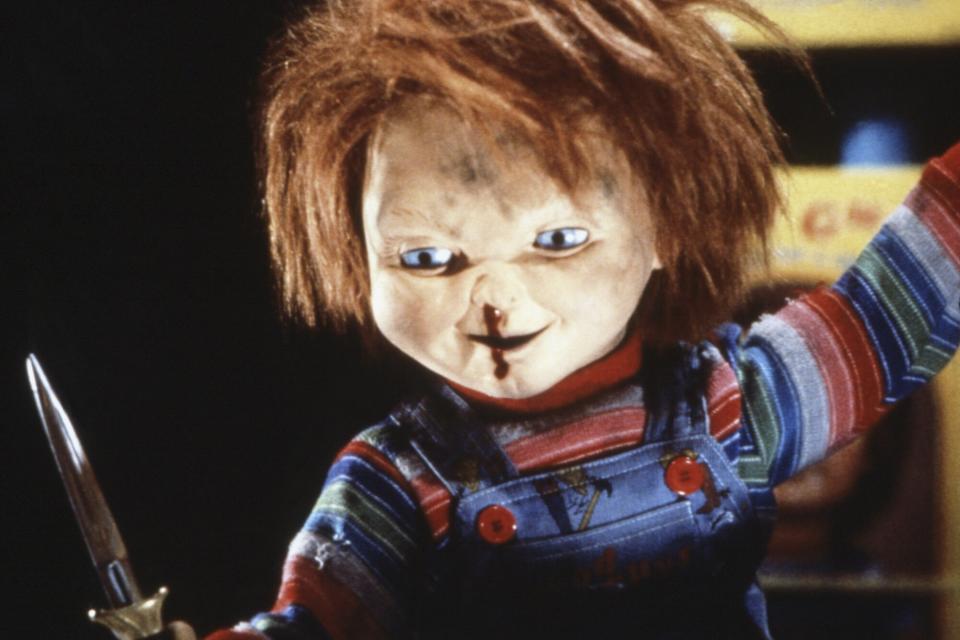
Related content:

